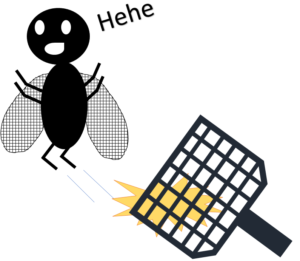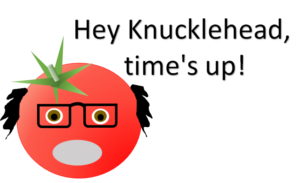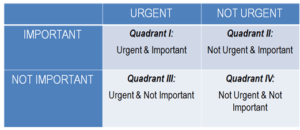Time. We are all painfully aware of the concept of time. We have an unknown, but finite amount of time in our lives and we generally feel like our available time each day is never enough. This feeling is often referred to as “time famine.” I am here to tell you that you have more time than you think you do.
What is Time?
The passage of time is a unidirectional concept formed within our minds. Recent research theorizes our brains might be “timestamping” neural activity to create this timeline of memories and our brains are essentially memories because each new experience causes a reordering of our neurons and synapses.
Time is within our minds; we cannot pick up a unit of time from the aisle of a store. Humans have created units of time because we need reference points for our consciousness. If you’re wondering, the second is defined as “the duration of 9,192,631,770 periods of the radiation corresponding to the transition between the two hyperfine levels of the ground state of the cesium 133 atom.” The feeling of a second passing for a human is different than for other animals as shown by this study. One of the researchers, Dr. Andrew Jackson, was quoted in The Guardian as saying ” if you look at flies, they can perceive light flickering up to four times faster than we can. You can imagine a fly literally seeing everything in slow motion.” While we may create scientific definitions of units of time to create standardization in our society, the perception of time is relative.

Time Famine
The term “time famine” was popularized in the late 1990s by a paper from Leslie A. Perlow called The Time Famine: Toward a Sociology of Work Time. Perlow studied software engineers and found they often felt like they had too much to do and too little time to do it all.
You may argue we live in a period of time where the pace of society and current technology have made us busier than ever. However, I would counter with a study from Gallup showing our perception of available time has not changed much over the last 2+ decades and the perceived lack of time was actually slightly higher in the mid-90s. In fact, technology and other advances might be giving us more leisure time than less.
Technology might also bring us ways to “buy time” and increase our happiness. The gig economy provides many opportunities to outsource common life tasks such as laundry and grocery shopping. Elizabeth Dunn, co-author of the study, put it this way:
“There’s been too much focus on maximizing money,” Dunn says. “Instead, think about how you can set up your life to maximize the time you get to do the things you love and minimize the time you have to spend doing what you hate.”
The Microwave Test
I like to do something I call the Microwave Test. Basically, when I am cooking food in the microwave for more than 45-60 seconds I try to run around the house and accomplish things before it beeps. The amount of time left usually amazes me. I challenge you to try it. The next time you microwave something for a minute or longer, go do some small tasks like put away shoes or wipe down a surface and see how many seconds are left.
On the flip side, watch a stupid video on YouTube and see how quickly time passes. It is easy to lose an hour on the internet, but it can be challenging to be fully productive for the amount of time a Hot Pocket takes to microwave (Can you read “Hot Pockets” NOT in Jim Gaffigan’s voice?). Time can be a paradox.
Tools to Reduce Time Famine
Managing Your Attention
One of the biggest things you can do is shift towards managing where you devote your attention instead of only managing your schedule. As Adam Grant, organizational psychologist at Wharton states:
“Attention management is the art of focusing on getting things done for the right reasons, in the right places and at the right moments.”
Time management may be part of the problem says Grant because it “makes us more aware of how many of those hours we waste” instead of getting to the root of the issue: where our attention is being diverted. Maura Thomas lays out four items to control (2 external and 2 internal) in order to reign in our attention.
- Technology
- Environment
- Behavior
- Thoughts*
*Meditation is a great way to practice controlling your thoughts and bringing your focus back.
Hybrid Approach
You may not want to throw the baby out with the bath water (i.e. time management) and instead find a way to integrate time management into attention management by blocking out parts of your day to focus on certain tasks. A popular method is the Pomodoro Technique where you set a timer for 25 minutes, focus, and then take a 5 minute break. I will also advocate for thinking about your routines and rituals to help you foster a conducive environment for focus. By making certain parts of your day automatic (routines) and using specific activities for breaks/task completion (rituals), you can keep your attention moving throughout the day. Craft rituals personalized to your needs such as stretching, petting your cat, grabbing a snack, etc.

TIP: If you find yourself procrastinating, it may be because of anxiety.
Better Prioritization
I prioritize my tasks and projects with what is sometimes called the Eisenhower Matrix or the Eisenhower Urgent/Important Principle. This concept was more recently popularized in Stephen Covey’s book The Seven Habits of Highly Effective People. The basic structure is ordering items into four quadrants:

It takes effort to make this system work because the temptation is often to mark everything as being Quadrant 1. You will need to sit down and think about what is truly important in your life. Evaluate your definition of urgency. A near-term deadline is a reason for it to be urgent whereas simply wanting to mark it off your list is not.
TIP: I use labels in Trello to mark each task with a quadrant. Depending on your task system, you could also use something like this Evernote template.
Multiplying Your Time
To build on the above, Rory Vaden introduces another piece to the system: significance. He reframes the question of “What is important today?” with “What can you do today to help ease tomorrow?” Vaden believes you can “multiply” your time by finding ways to remove tasks, automate them, delegate them, or push to a later time when you can re-evaluate them again. I highly recommend watching Vaden’s TEDx talk on this topic (see below).
The goal is to strip out the unnecessary. I have started viewing Quadrant 4 as not even being an allowed label. If an item is not urgent and not important, I should remove it entirely from my to-do list. Put these items elsewhere like in a journal. Remove the clutter from your list and the temptation to spend time on low-value tasks. Yes, they are easy to do. Yes, they likely have known results. Those are the reasons we fall into the trap though. These tasks are often ways of procrastinating because of our anxiety and fear for the larger projects as the linked article above describes.
My 30 Second Rule
I have a personal rule: if it takes less than 30 seconds, do it right now. I mainly use this rule to keep things tidy and prevents lots of little things from building up. Having objects in the house out of their designated areas can create nagging stress for me. I realize putting any weight to these types of bottom-feeder tasks may somewhat violate the points above. However, these are tasks you can finish in the amount of time it would take you to evaluate and/or put it down on a list. A certain number of these tasks are inevitable in life due to how they might impact your emotional, physical, and mental states. The important thing to remember is these are quick tasks with a defined benefit after completion (e.g. an organized home).
PRO TIP: Use things like your microwave time or other opportunities where you are waiting to knock off some of these items. They should never disrupt your flow on more important items though.
Strategic Planning
This is a topic for a whole separate post but worth mentioning here. You should make it a goal to spend time each month (or more frequently) to think strategically about your life. Having a more organized mental picture of your goals and what matters to you will help you stay on top of your attention management. Stay tuned for more on this idea as I explore it in my own life.
Just Being Instead of Being XYZ
I created this blog to help people find ways to “take back” our time, not so we can be busier, but so we can be quieter. My goal is to free up as much time as I can to explore the outdoors. I want to lose myself in the pages of a book because I have the time and peace of mind to do so. As Bryan Robinson, PhD points out in his article about this topic, we need to focus more on simply being in the moment instead of rushing through to accomplish the next thing. We may be missing out on life by doing so.
“If you’re like most people who grew up in the United States, you’ve heard the adage, “An idle mind is the devil’s workshop.” This mindset permeates our time-obsessed culture to the extent that doing is more valued than being.”
The Goal
Live a life of time affluence. It is not a question of have or have not when it comes to time, but rather an issue of perspective and proper use. Do not fall into the trap of feeling “productivity guilt”. Enjoying life can be as valuable or more than checking another project off the list. And remember, being busy is not necessarily being productive.